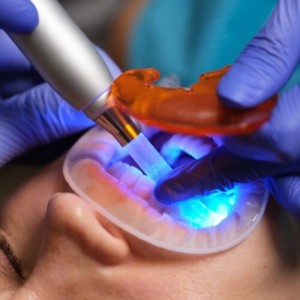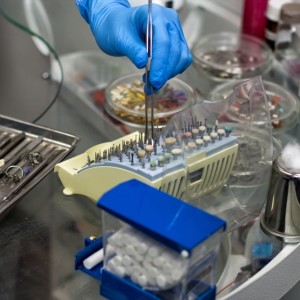
Incisor position and alveolar bone thickness
Davide Elsido
Evaluating the position of central incisors using a lateral cephalogram is a routine part of orthodontic diagnosis. The inclination of the central incisors and their relationship to surrounding alveolar bone can be easily assessed and often govern treatment decisions involving anterior-posterior (AP) incisor movements within the jaws. The cortical surfaces of alveolar bone represent a limiting factor for orthodontic tooth movement beyond which fenestration and/or dehiscence might occur. Induced contact between incisor roots and alveolar cortical bone can also precipitate externa root resorption. Contact between maxillary incisor roots and the incisive canal has also been shown to be a risk factor for external root resorption, further limiting the range within which maxillary incisors might be safely moved in some patients.
Evaluating root positions in a sample with naturally occurring optimal occlusions could elucidate anatomic relationships between roots and alveolar bone worthy of emulation. In this study, appeared on the Angle Orthodontist December 2021 issue, the positions of maxillary and mandibular central incisors were assessed using lateral cephalograms. Their long-axis inclination as well as the AP position of the roots with respect to local alveolar bone were evaluated. Data from a sample with naturally occurring optimal occlusions were compared to a sample with naturally occurring Class II malocclusions with concurrent AP skeletal discrepancies (Cl II).
Significant intergroup differences were found, mandibular incisor root apices were generally equidistant from the labial and lingual surfaces of the alveolus in the optimal sample but closer to the lingual surface in the Class II sample. The authors stated that in untreated individuals, maxillary central incisors tend to occupy the anterior one-third of the maxillary alveolar process, regardless of AP jaw relationships; in untreated individuals with optimal occlusions, mandibular central incisor root apices tend to be centered within the mandibular alveolar process; in untreated individuals with Class II malocclusions associated with relative mandibular retrognathia, mandibular central incisors are more positively inclined, and their root apices are more posterior than in those with untreated optimal occlusions.
 Related articles
Related articles
Orthodontics 08 October 2025
The field of orthodontics in its new era is venturing ahead to more up-to-date technological point of view.
Orthodontics 25 August 2025
Orthodontics 25 June 2025
Clinical application of magnets in orthodontics and biological implications: a review
Over the last decade magnets have been used in orthodontic and dentofacial orthopaedics and attempts have been made to evaluate the biological implications of magnets and magnetic fields during...
Orthodontics 10 June 2025
It has long been claimed that presurgical orthodontics is crucial to the outcome of surgical-orthodontic treatment for dentofacial deformity
The use of 3D technology in orthodontics has increased recent years. 3D intra-oral scanning, cone beam computed tomography (CBCT), 3D printing and computer-aided design and computer-aided...
 Read more
Read more
Editorials 10 October 2025
With proud smiles and crisp white coats, ninety-three learners from the DDS Class of 2029 and the International Dentist Pathway Class of 2028 marked the start of their dental careers at the UCSF...
Periodontology 10 October 2025
Continuous professional development (CPD) in Periodontology refers to the overall framework of opportunities that facilitate a life-long learning practice, driven by the learner-practitioner and...
TheraBreath, the #1 alcohol-free mouthwash brand in the U.S.*, has introduced a new line of dentist-formulated, clinically tested toothpastes designed to support professional oral care...
News 10 October 2025
New officers and trustees were installed at the Minnesota Dental Association’s Leadership Conference on September 19 in Minneapolis.
News 10 October 2025
Smartee Denti-Technology today announced that Professor Gang Shen, its Chief Scientist and Executive President of TaiKang ByBo Dental, has once again been named to the World’s Top 2% Scientists...


.png)












